Influences of a Hot-Working Process on the Microstructural Evolution and Creep Performance of a Spray-Formed Nickel-Based Superalloy
Abstract
1. Introduction
2. Materials and Methods
3. Results
3.1. Creep Properties and Creep Characteristics
3.2. Creep Microstructure Characteristics
3.3. Creep Fracture Characteristics
4. Discussion
4.1. Dislocation Configuration and Creep Deformation Mechanism
4.2. Creep Damage and Endurance Life Prediction
5. Conclusions
- Under the creep condition of 705 °C/897 MPa, the creep rupture time and strain of the IFed alloy are about 24.6 h and 5.8% higher, respectively, compared with that of the HIPed alloy, and the endurance life of the former is 1.4 times longer than that of the latter.
- There is only one size of the cubic shaped tertiary γ′ precipitates in the HIPed alloy after creep. The phenomenon of coarsening and growing of tertiary γ′ precipitates is obvious. Some secondary γ′ precipitates coarsen to form raft structures.
- There are two sizes of tertiary γ′ precipitates in the IFed alloy after creep. The division and coarsening of the big tertiary γ′ precipitates occurred simultaneously. Part of the big tertiary γ′ precipitates coarsened to form raft structures, with a cubic shape, that are mainly distributed in the grains. The small tertiary γ′ precipitates coarsened and were distributed in the phase boundary between the primary and secondary γ′ precipitates and the matrix. After creep, the secondary γ′ precipitates are distributed in the grains, but no raft structure of secondary γ′ precipitates is observed.
- The fracture source areas of both HIP and IFed alloys demonstrate intergranular fracture characteristics. The difference is that the cracks in the HIPed alloy usually initiate at the trigeminal intersection of the grain boundaries and produce wedge-shaped cracks. However, the IFed alloy has serrated, curved grain boundaries, which allows cavity cracks to more easily germinate at the grain boundary and carbide interfaces.
- Under the condition of 705 °C and 897 MPa, the creep deformation mechanism of both HIPed and IFed alloys is dislocation and the stacking fault cutting the γ′ precipitate. Continuous wide stacking faults running through the γ matrix and γ′ precipitate are present in both alloys.
- The creep properties of the FGH100L alloy is sensitive to stress and temperature. Under the condition of 705 °C/690–897 MPa, the stress exponent n of the IFed alloy is 16.33. Under the condition of 897 MPa/650–750 °C, the creep activation energy Qc of the IFed alloy is 339.35 kJ/mol.
Author Contributions
Funding
Acknowledgments
Conflicts of Interest
References
- Wu, R.H.; Yue, Z.F.; Wang, M. Effect of initial γ/γ′ microstructure on creep of single crystal nickel-based superalloys: A phase-field simulation incorporating dislocation dynamics. J. Alloy. Compd. 2019, 779, 326–334. [Google Scholar] [CrossRef]
- Pettinari-Sturmel, F.; Vultos, W.; Hantcherli, M.; Warot-Fonrose, B.; Marcelot, C.; Douin, J.; Cormier, J.; Villechaise, P.; Devaux, A. Creep behavior in the new AD730TM nickel-based disk superalloy—Influence of aging heat treatment and local chemical fluctuations. Mater. Sci. Eng. A 2019, 754, 9–17. [Google Scholar] [CrossRef]
- Detrois, M.; Rotella, J.; Goetz, R.L.; Helmink, R.C.; Tin, S. Grain boundary engineering of powder processed Ni-base superalloy RR1000: Inflfluence of the deformation parameters. Mater. Sci. Eng. A 2015, 627, 95–105. [Google Scholar] [CrossRef]
- Hu, B.F.; Liu, G.Q.; Jia, C.C.; Tian, G.F. Development in new type high performance P/M superalloys. J. Mater. Eng. 2007, 2, 49–53. (In Chinese) [Google Scholar]
- Timothy, J.G.; Gabb, P.; Telesman, J. Thermal and Mechanical Property Characterization of the Advanced Disk Alloy LSHR; NASA/TM-2005-213645; NASA: Washington, DC, USA, 2005; pp. 1–80. [Google Scholar]
- Zhang, Y.W.; Chi, Y.; Liu, J.T. Recent development of new type powder metallurgy superalloys in Russia. Powder Metall. Ind. 2015, 4, 1–14. (In Chinese) [Google Scholar]
- Xie, J.; Tian, S.G.; Shang, L.J.; Zhou, X.M. Creep behaviors and role of dislocation network in a powder metallurgy Ni-based superalloy during medium-temperature. Mater. Sci. Eng. A 2014, 606, 304–312. [Google Scholar] [CrossRef]
- Peng, Z.C.; Tian, G.F.; Jiang, J.; Li, M.Z.; Chen, Y.; Zou, J.W.; Dunne, F.P.E. Mechanistic behaviour and modelling of creep in powder metallurgy FGH96 nickel superalloy. Mater. Sci. Eng. A 2016, 676, 441–449. [Google Scholar] [CrossRef]
- Liu, C.K.; Zhou, J.Y.; Wei, Z.W.; Chen, F.; Tao, C.H. Evolution and quantitative characterization of γ′ phase in FGH97 powder metallurgy superalloy during high-temperature heat exposure. Mater. Mech. Eng. 2018, 42, 9–13. (In Chinese) [Google Scholar]
- Huang, H.L.; Zhang, H.F.; Hu, B.F.; Wang, H.; Liu, G.Q. Study on γ′ precipitation behavior in a nickel-based PM superalloy during interrupted continuous cooling. Intermetallics 2020, 116, 106659. [Google Scholar] [CrossRef]
- William, T.; Robin, M.J.; Ramesh, S. Spray Forming of Nickel Superalloys. In Metal Sprays and Spray Deposition, 1st ed.; Henein, H., Uhlenwinkel, V., Fritsching, U., Eds.; Springer International Publishing AG: Cham, Switzerland, 2017; pp. 497–520. [Google Scholar]
- Zhu, Z.; Basoalto, H.; Warnken, N.; Reed, R.C. A model for the creep deformation behaviour of nickel-based single crystal superalloys. Acta Mater. 2012, 60, 4888–4900. [Google Scholar] [CrossRef]
- Zhang, P.; Li, J.; Gong, X.F.; Yuana, Y.; Gu, Y.F.; Wang, J.C.; Yan, J.B.; Yin, H.F. Creep behavior and deformation mechanisms of a novel directionally solidified Ni-base superalloy at 900 °C. Mater. Charact. 2019, 148, 201–207. [Google Scholar] [CrossRef]
- Li, Y.F.; Wang, L.; Zhang, G.; Zhang, J.; Lou, L.H. Creep anisotropy of a 3rd generation nickel-base single crystal superalloy at 850 °C. Mater. Sci. Eng. A 2019, 760, 26–36. [Google Scholar] [CrossRef]
- Zhao, G.Q.; Tian, S.G.; Zhang, S.K.; Tian, N.; Liu, L.R. Deformation and damage features of a Re/Ru- containing single crystal nickel base superalloy during creep at elevated temperature. Prog. Nat. Sci. 2019, 29, 210–216. [Google Scholar] [CrossRef]
- Song, W.; Wang, X.G.; Li, J.G.; Ye, L.H.; Hou, G.C.; Yang, Y.H.; Liu, J.L.; Liu, J.D.; Pei, W.L.; Zhou, Y.Z.; et al. Effect of ruthenium on microstructure and high-temperature creep properties of fourth generation Ni-based single-crystal superalloys. Mater. Sci. Eng. A 2019, 772, 1–26. [Google Scholar] [CrossRef]
- Wu, J.; Li, C.; Liu, Y.C.; Wu, Y.T.; Guo, Q.Y.; Li, H.J.; Wang, H.P. Effect of annealing treatment on microstructure evolution and creep behavior of a multiphase Ni3Al-based superalloy. Mater. Sci. Eng. A 2019, 743, 623–635. [Google Scholar] [CrossRef]
- Yue, Q.Z.; Liu, L.; Yang, W.C.; He, C.; Sun, D.J.; Huang, T.W.; Zhang, J.; Fu, H.Z. Stress dependence of the creep behaviors and mechanisms of a third-generation Ni-based single crystal superalloy. J. Mater. Sci. Technol. 2019, 35, 752–763. [Google Scholar] [CrossRef]
- Huo, J.J.; Shi, Q.Y.; Feng, Q. Effect of multiple alloying additions on microstructural features and creep performance at 950 °C and 400 MPa in Ru-containing single crystal superalloys. Mater. Sci. Eng. A 2017, 693, 136–144. [Google Scholar] [CrossRef]
- Tian, S.G.; Wu, J.; Shu, D.; Su, Y.; Yu, H.C.; Qian, B.J. Influence of element Re on deformation mechanism within γ′ precipitate of single crystal nickel-based superalloys during creep at elevated temperatures. Mater. Sci. Eng. A 2014, 616, 260–267. [Google Scholar] [CrossRef]
- Lv, X.Z.; Zhang, J.X. Core Structure of a <100> interfacial superdislocations in a nickel-base superalloy during high-temperature and low-stress creep. Mater. Sci. Eng. A 2017, 683, 9–14. [Google Scholar] [CrossRef]
- Mohammad, A.; Mahboobeh, A. Evaluation of high-temperature creep behavior in Inconel-713C nickel based superalloy considering effects of stress levels. Mater. Sci. Eng. A 2017, 689, 298–305. [Google Scholar]
- Wollgramm, P.; Buck, H.; Neuking, K.; Parsa, A.B.; Schuwalow, S.; Rogal, J.; Drautz, R.; Eggeler, G. On the role of Re in the stress and temperature dependence of creep of Ni-base single crystal superalloys. Mater. Sci. Eng. A 2015, 628, 382–395. [Google Scholar] [CrossRef]
- Viswanathan, G.B.; Sarosi, P.M.; Mills, M.J. Deformation mechanisms at intermediate creep temperatures in the Ni-base superalloy Rene 88DT. Mater. Sci. Eng. A 2005, 400, 489–495. [Google Scholar] [CrossRef]
- Jia, C.L.; Zhang, F.L.; Wei, K.; Lv, S.M. Effective solution treatment can result in improved creep performance of superalloys. J. Alloy. Compd. 2019, 770, 166–174. [Google Scholar] [CrossRef]
- Jia, C.L.; Li, Y.; Zhang, F.L.; Lv, S.M. The creep behavior of a disk superalloy under different stress conditions. Metal Powder Rep. 2018, 73, 94–100. [Google Scholar] [CrossRef]
- China National Standardization Administration. Metallic Materials—Uniaxial Tensile Creep Test Method for Metallic Materials; GBT 2039-2012; China Standard Press: Beijing, China, 2012; pp. 1–38. (In Chinese) [Google Scholar]
- Tian, T.; Hao, Z.B.; Jia, C.L.; Ge, C.C. Microstructure and properties of a new third generation powder metallurgy superalloy FGH100L. Acta. Metall. Sin. 2019, 55, 1260–1272. [Google Scholar]
- Jia, J.; Tao, Y.; Zhang, Y.W.; Zhang, Y. Reverse coarsening splitting behavior of the secondary γ′ in superall- oy FGH 95 during long-term aging. Rare Metal Mat. Eng. 2012, 41, 1156–1160. (In Chinese) [Google Scholar]
- Xie, J.; Tian, S.G.; Li, J.J. Influence of γ/γ′ lattice misfit on creep behaviors of FGH95 Ni-based superalloy. Mater. Sci. Technol. 2013, 9, 1021–1026. [Google Scholar] [CrossRef]
- Xie, J.; Tian, S.G.; Zhou, X.M. Effect of HIP temperature on microstructure and creep property of FGH- 95 alloy. High Tem. Mater. Processes 2012, 31, 61–66. [Google Scholar]
- Guo, J.T.; Yuan, C.; Hou, J.S. Creep and creep-fatigue-environment interaction and mechanisms of superalloys. Chin. J. Nonferrous Metals 2011, 3, 25–42. [Google Scholar]
- McLean, D. Mechanical Properties of Metals; John Wiley & Sons Inc.: Hoboken, NJ, USA, 1962; pp. 308–311. [Google Scholar]
- Kim, W.G.; Park, J.Y.; Ekaputra, I.; Kim, S.J.; Kim, M.H.; Kim, Y.W. Creep deformation and rupture behavior of Alloy 617. Eng. Fail. Anal. 2015, 58, 441–451. [Google Scholar] [CrossRef]
- Davies, S.J.; Jeffs, S.P.; Coleman, M.P.; Lancaster, R.J. Effects of heat treatment on microstructure and creep properties of a laser powder bed fused nickel superalloy. Mater. Des. 2018, 159, 39–46. [Google Scholar] [CrossRef]
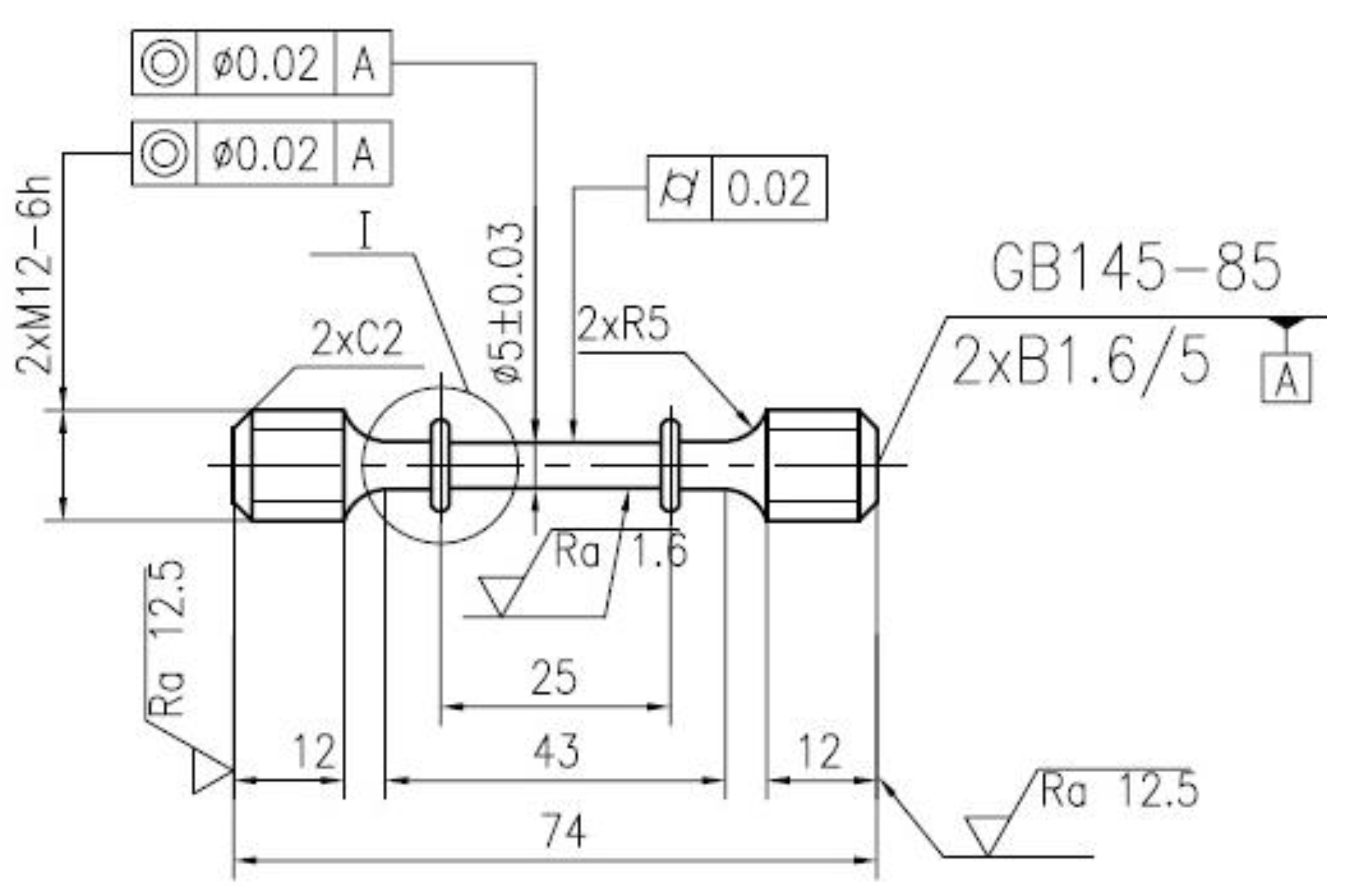
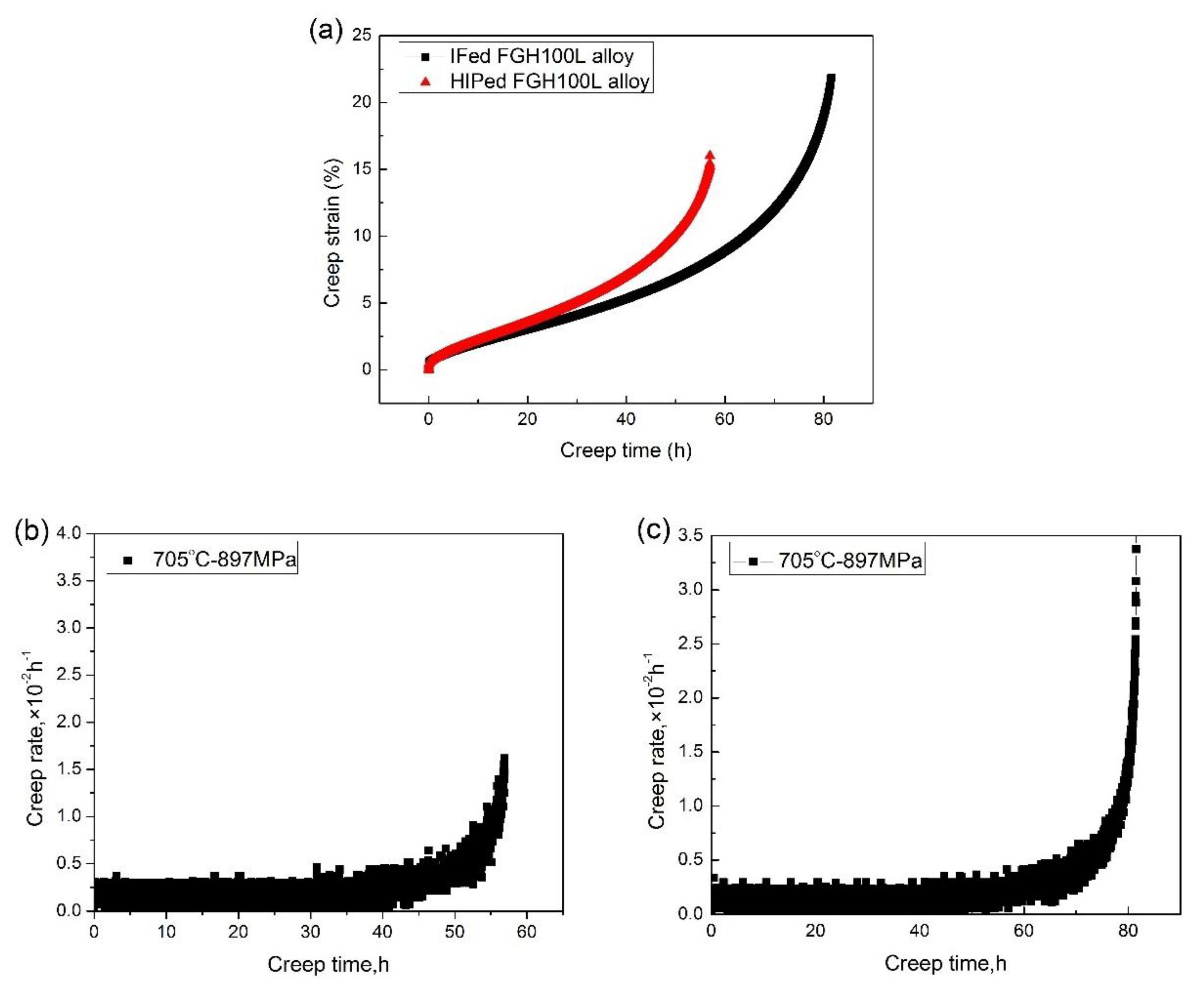
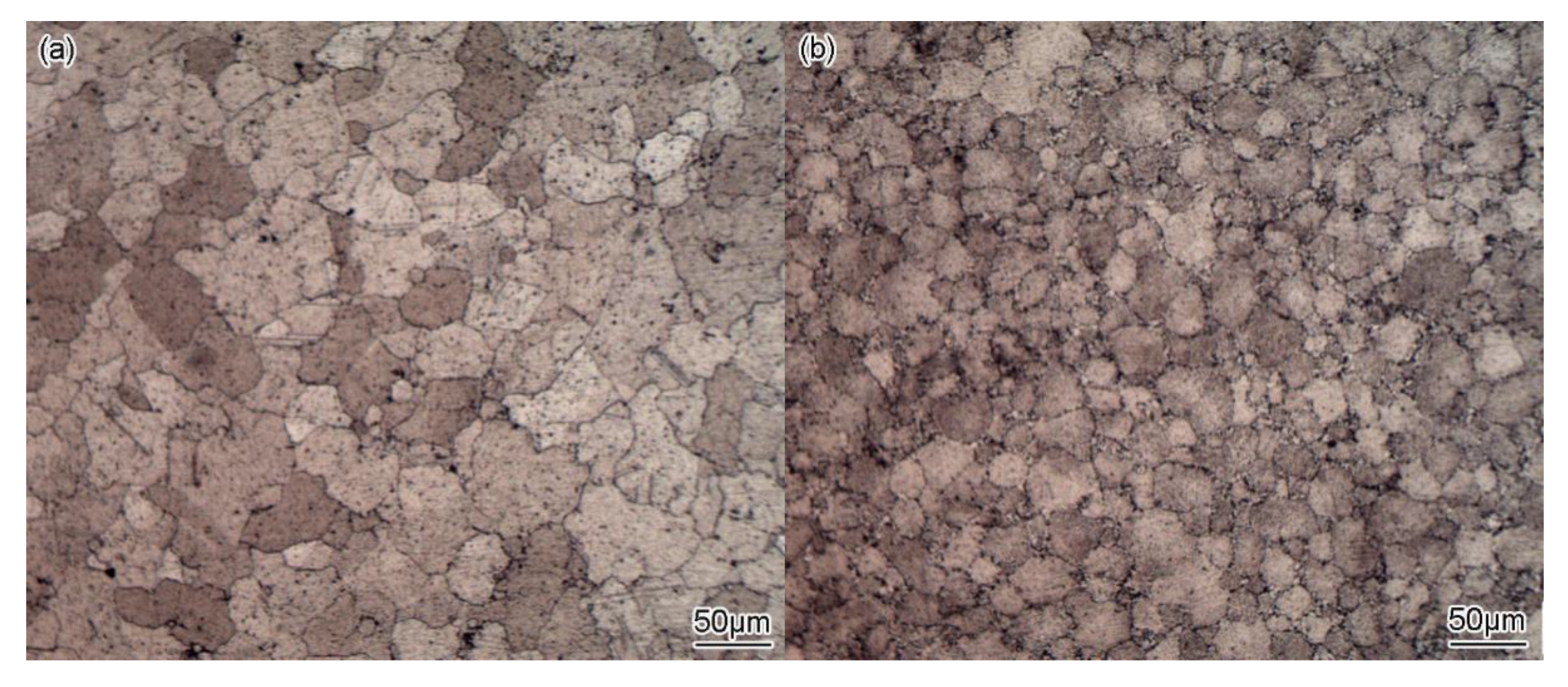

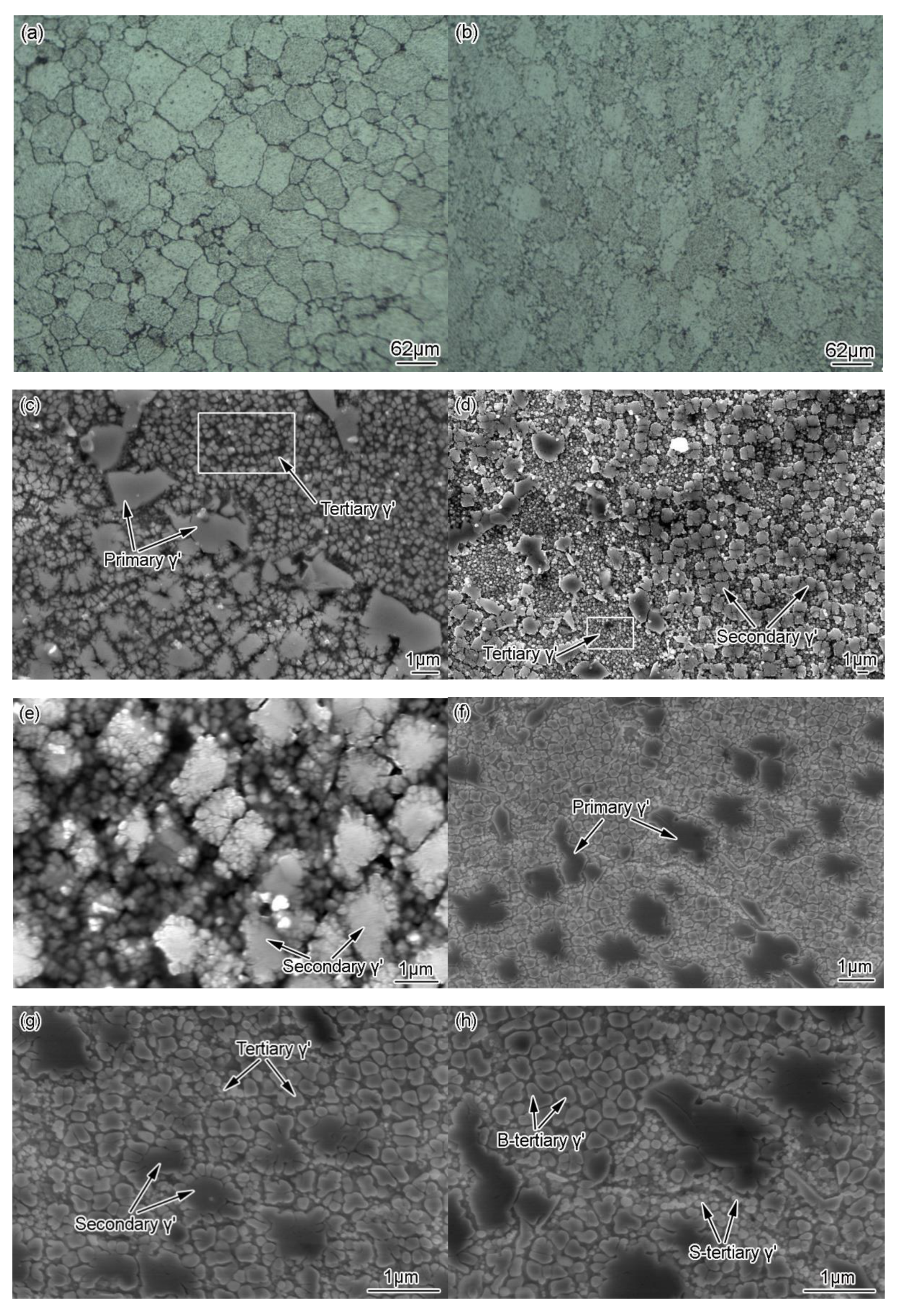
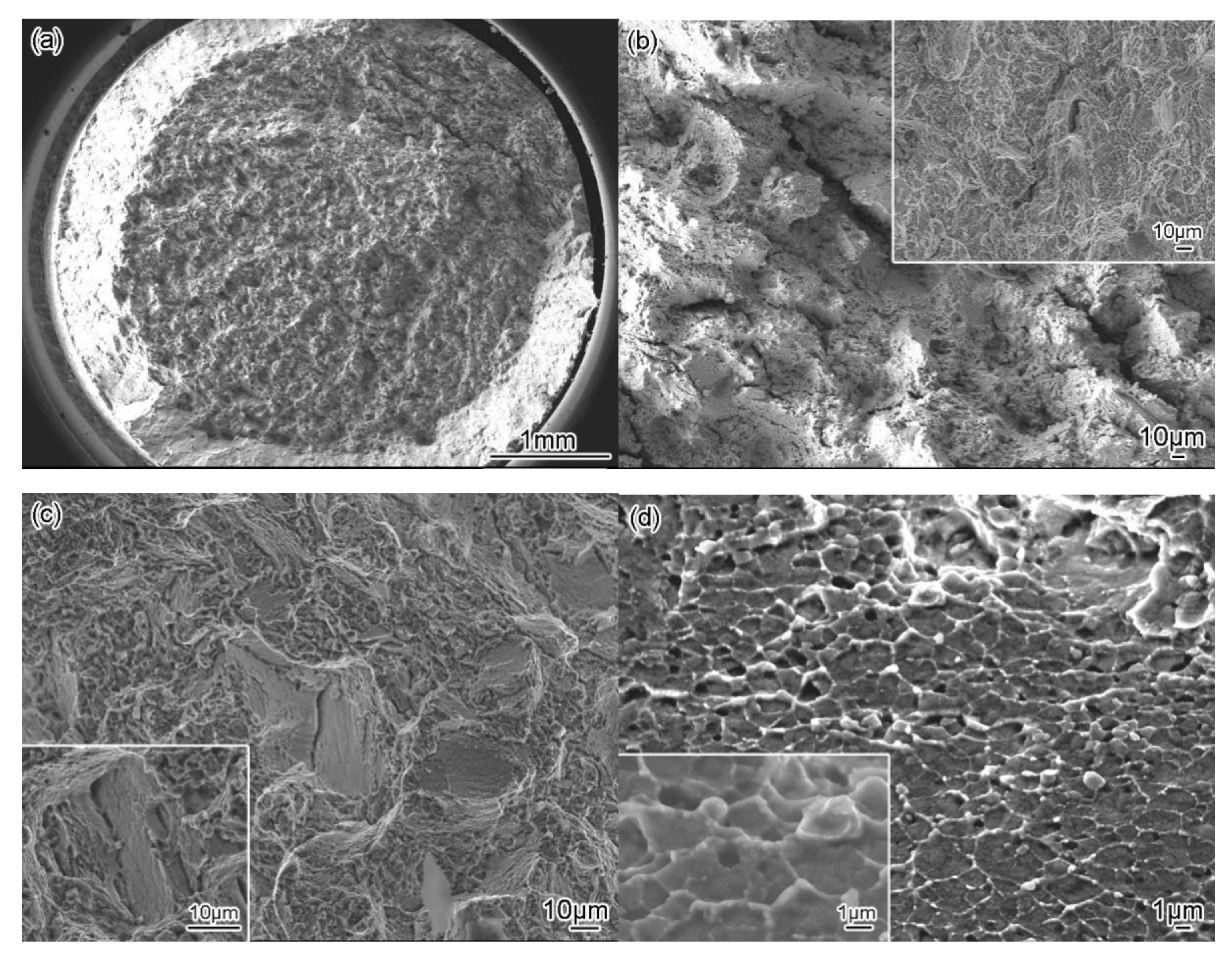
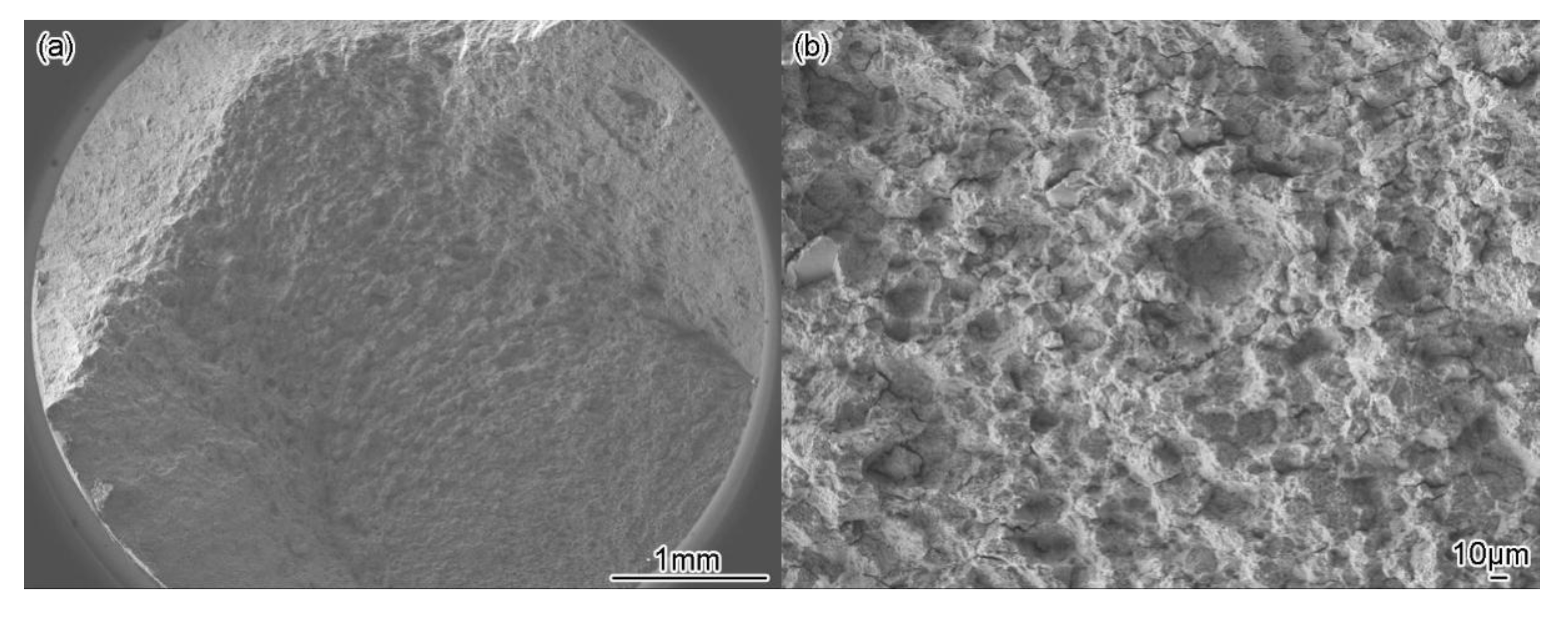
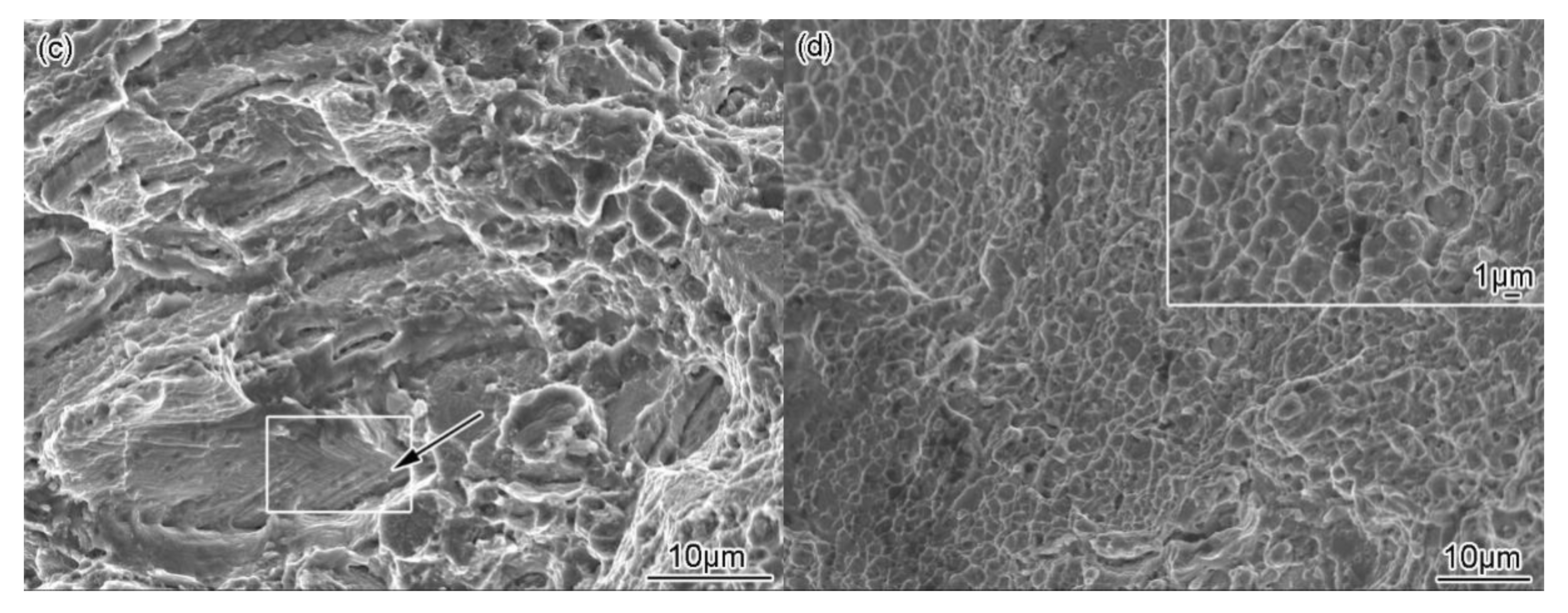
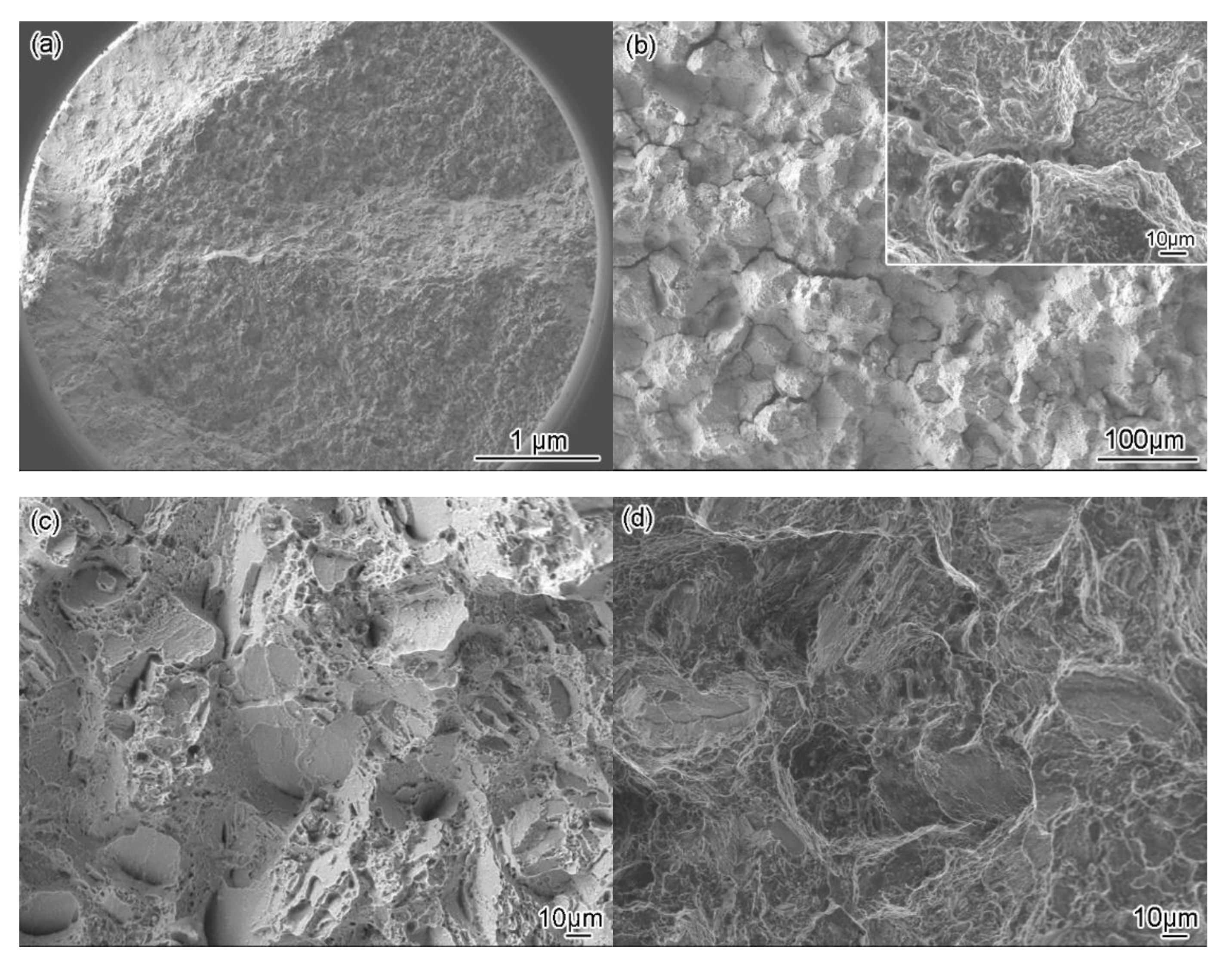
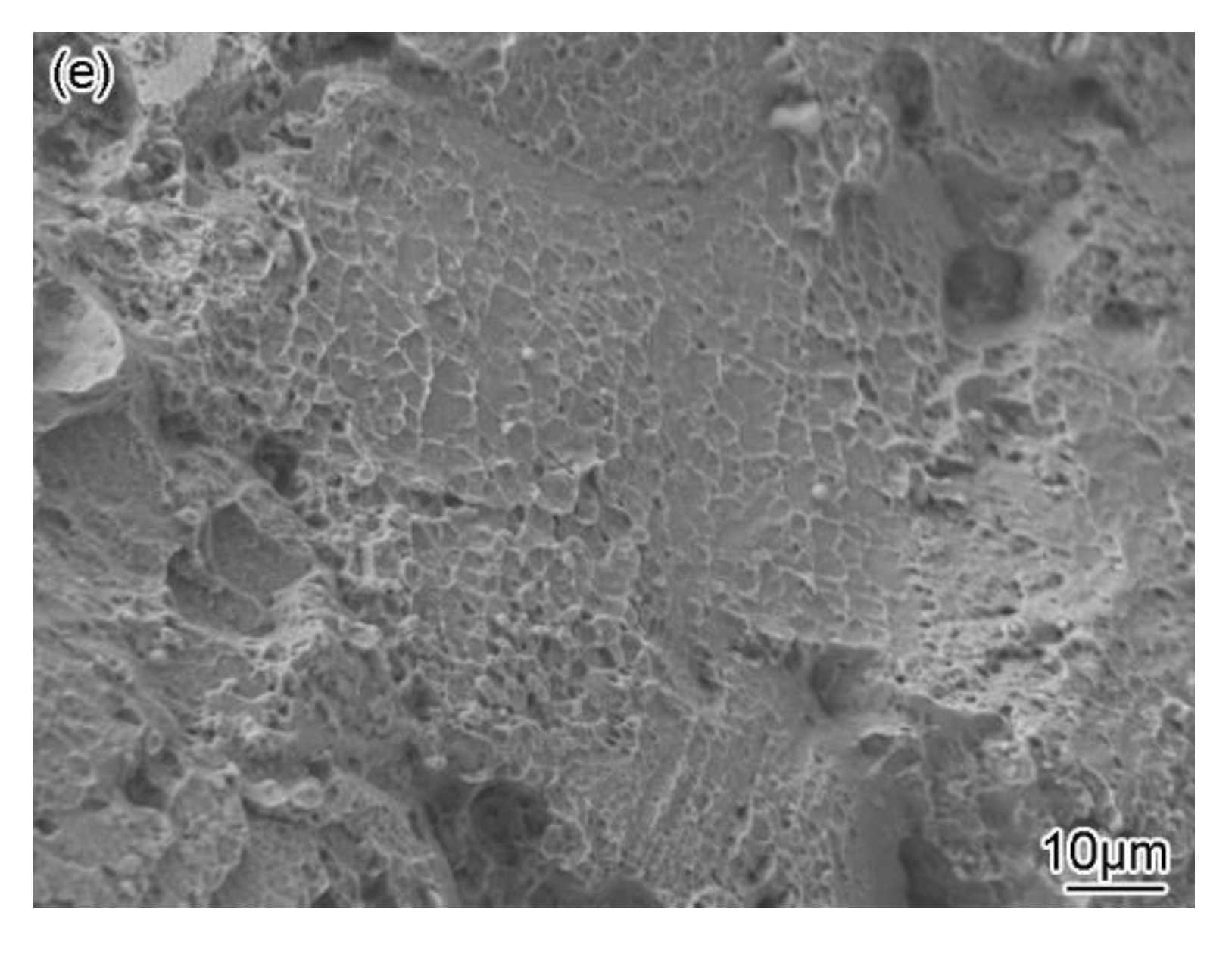
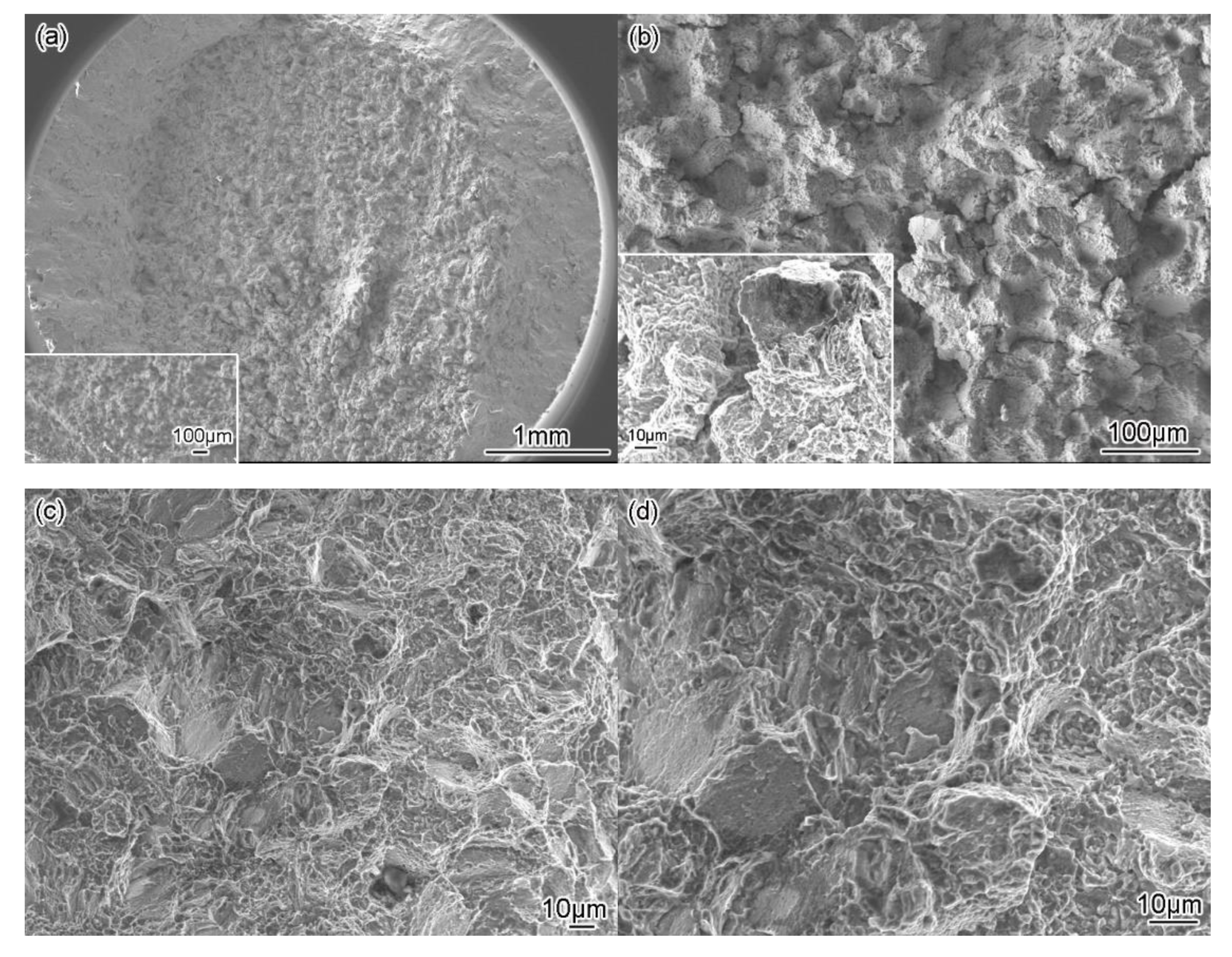
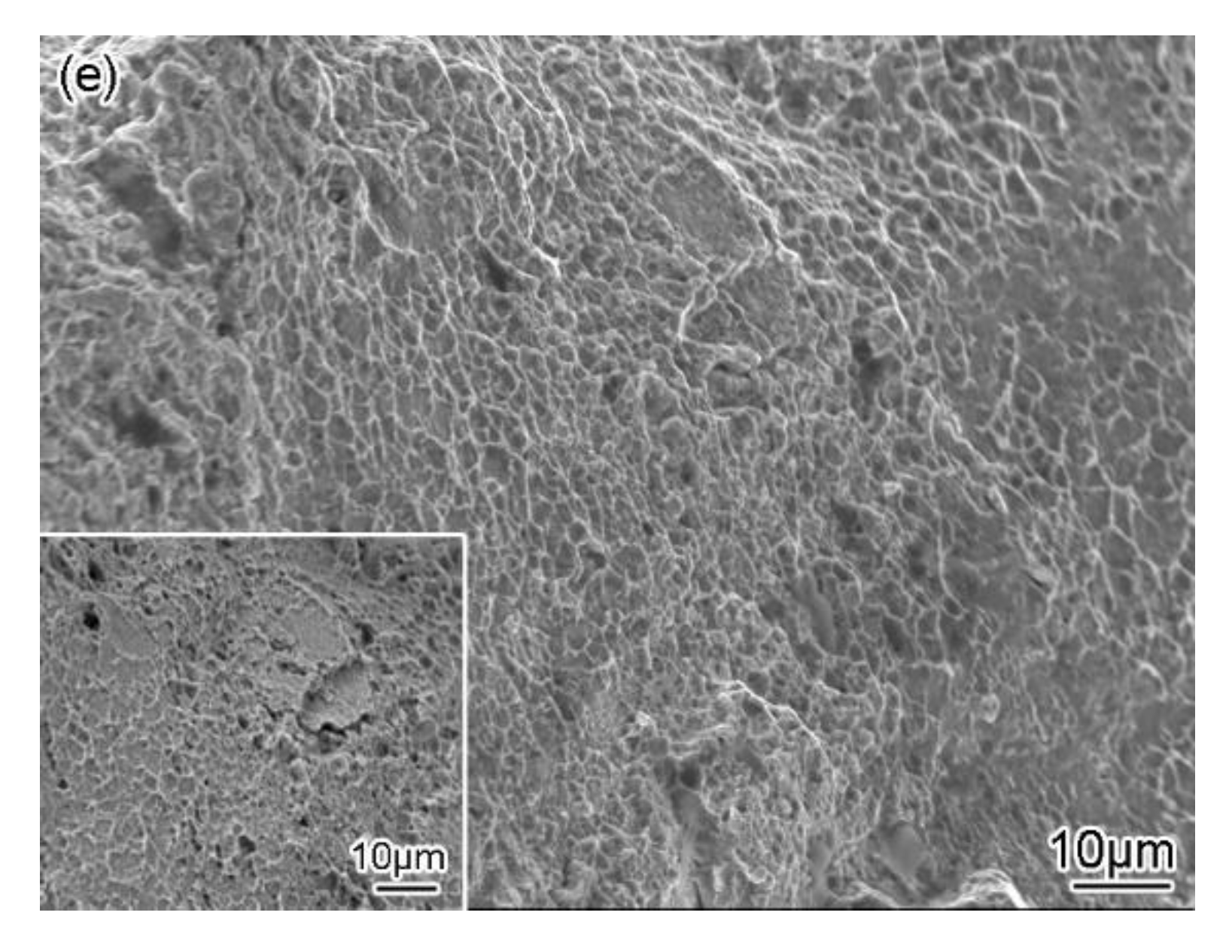
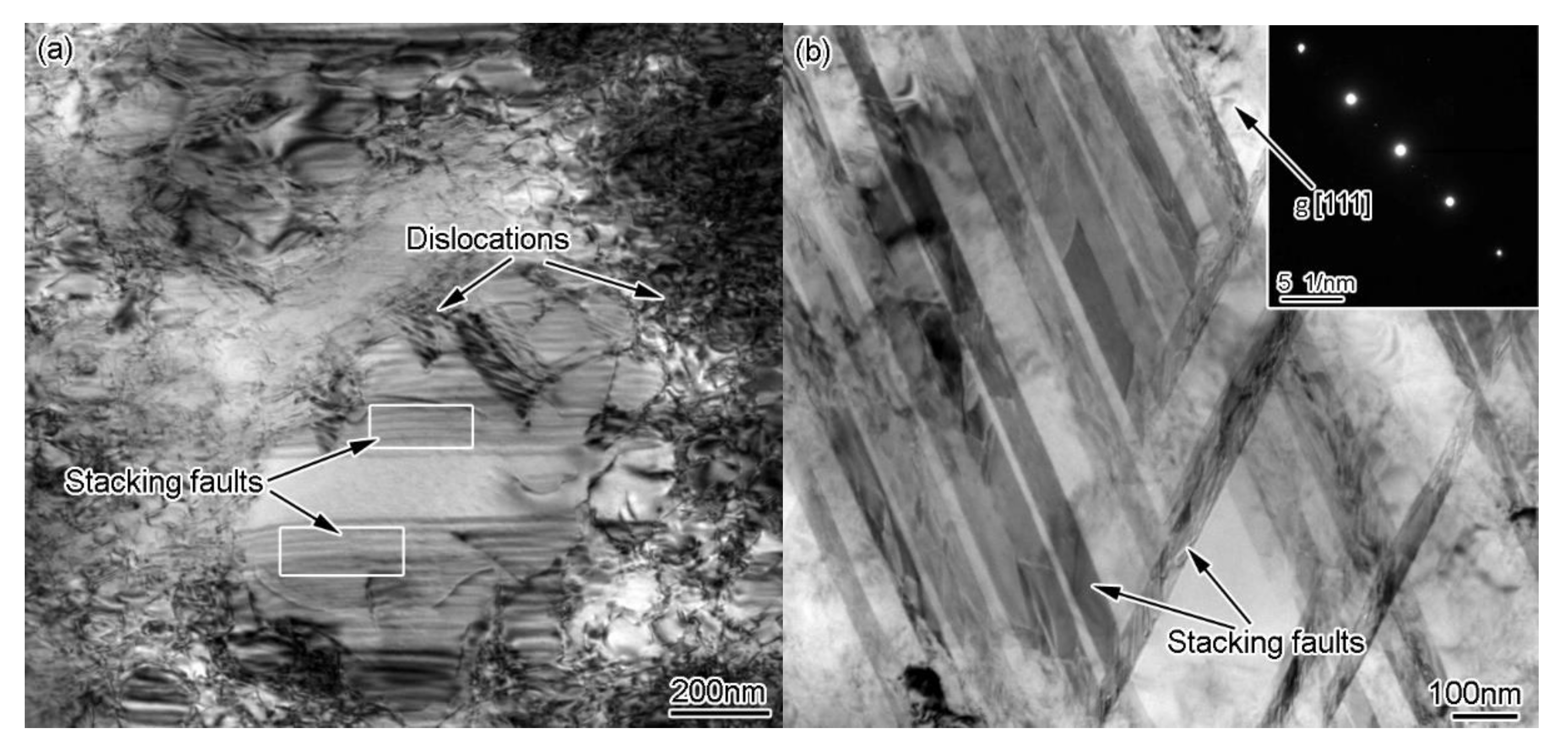

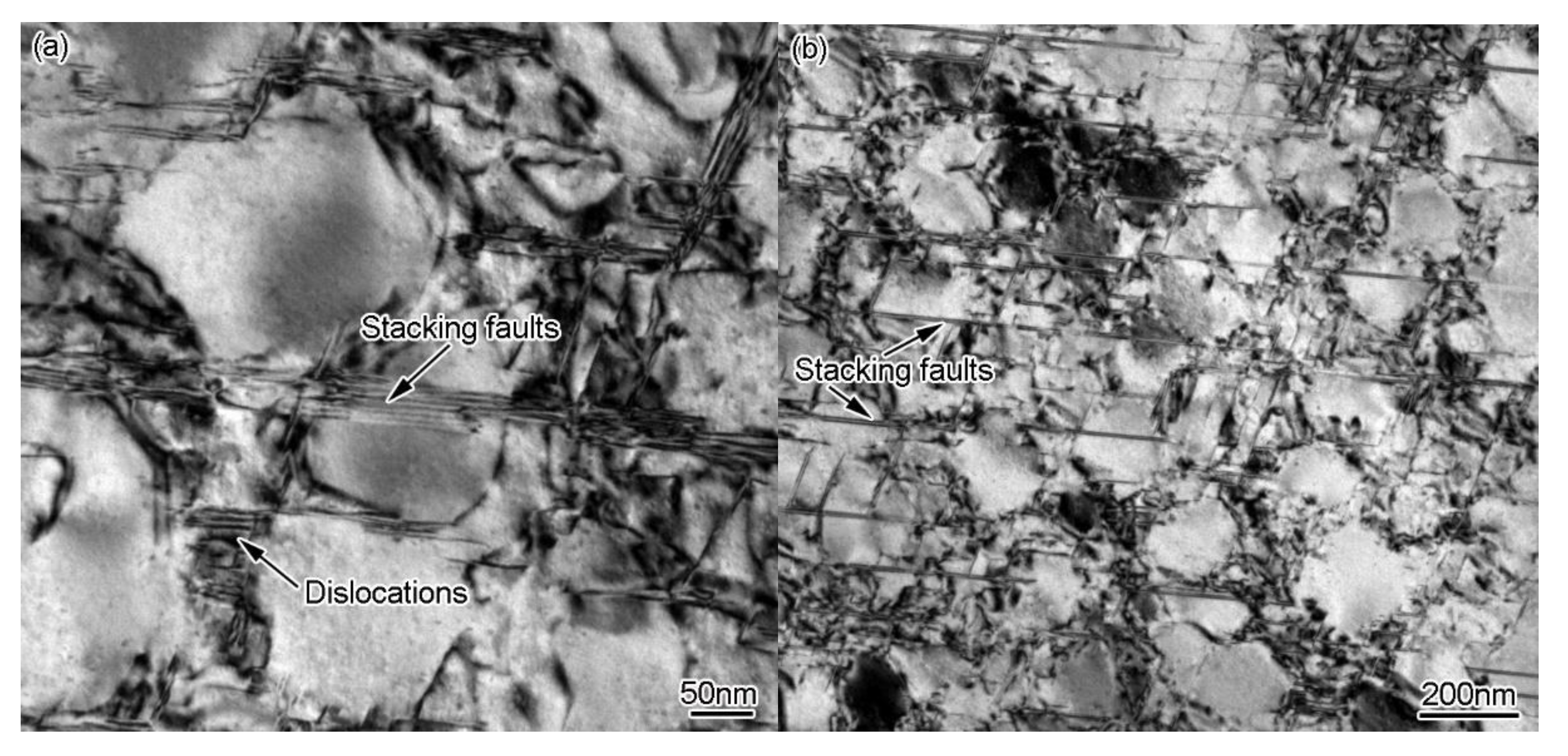
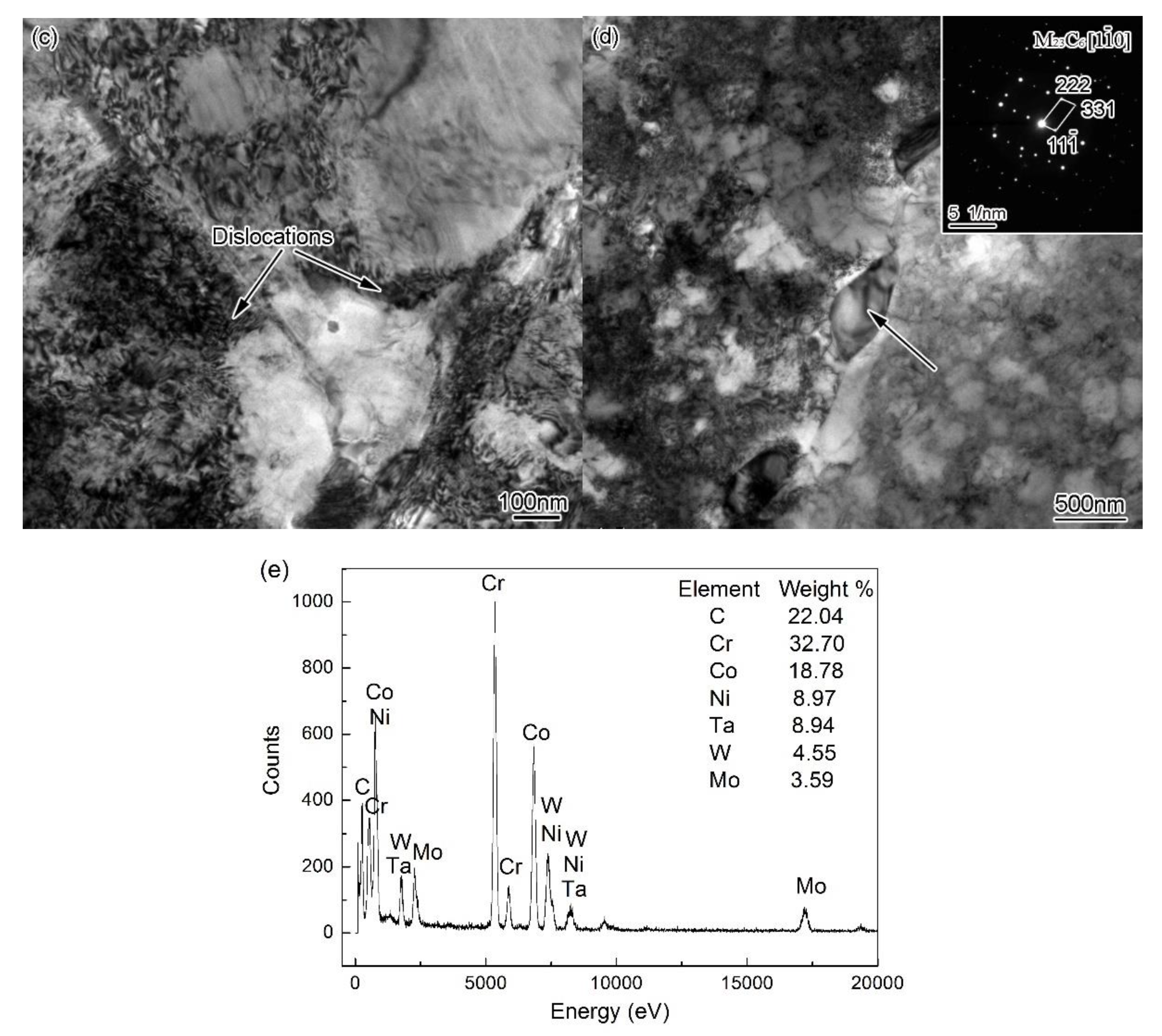
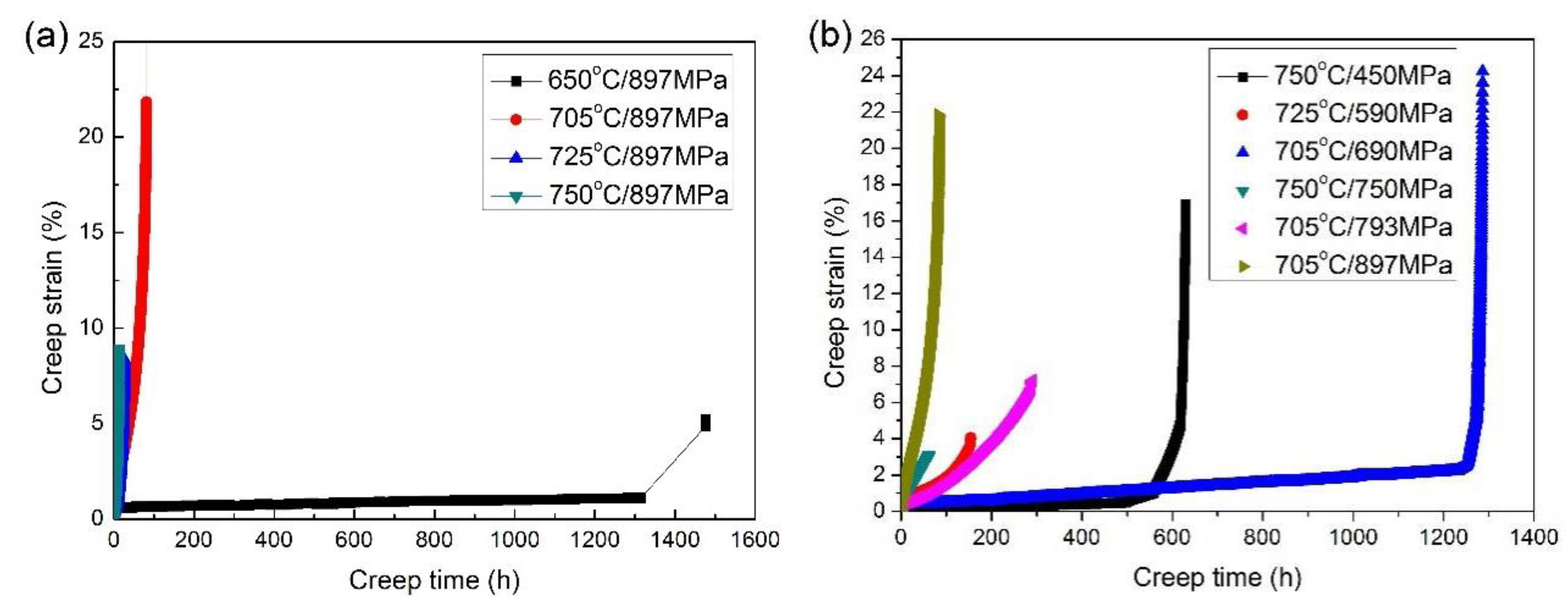


| Preparation Process | Temperature (°C) | Stress (MPa) | Rupture Life (h) | Strain (%) |
|---|---|---|---|---|
| HIP | 705 | 897 | 56.96 | 16.0 |
| HIP + IF | 750 | 450 | 629.18 | 37.1 |
| 705 | 690 | 1286.27 | 24.9 | |
| 793 | 290.46 | 7.2 | ||
| 897 | 81.54 | 21.9 |
| Preparation Process | Test Conditions | Stress-Rupture Life (h) | Elongation (%) |
|---|---|---|---|
| HIP | 705 °C/897 MPa | 47.8 | 12 |
| HIP + IF | 705 °C/897 MPa | 66.5 | 14 |
| Preparation Process | Average Density/(g·cm−3) | Relative Density/% |
|---|---|---|
| SF | – | 97.33 |
| HIP | 8.23 | 98.44 |
| HIP+IF | 8.29 | 99.16 |
| Process | Before Creep | After Creep | ||||||
|---|---|---|---|---|---|---|---|---|
| Grain Size | Primary γ′ | Secondary γ′ | Tertiary γ′ | Grain Size | Primary γ′ | Secondary γ′ | Tertiary γ′ | |
| HIP | 40.73 μm | 1.98 μm | 0.84 μm | B-tertiary γ′ 0.14 μm; S-tertiary γ′ 0.06 μm | 54.44 μm | 2.32 μm | 1.18 μm | 0.23 μm |
| IF | 24.25 μm | 1.75 μm | 0.52 μm | B-tertiary γ′ 0.08 μm; S-tertiary γ′ 0.01 μm | 37.24 μm | 1.72 μm | 0.62 μm | B-tertiary γ′ 0.24 μm; S-tertiary γ′ 0.06 μm |
© 2020 by the authors. Licensee MDPI, Basel, Switzerland. This article is an open access article distributed under the terms and conditions of the Creative Commons Attribution (CC BY) license (http://creativecommons.org/licenses/by/4.0/).
Share and Cite
Tian, T.; Ge, C.; Li, X.; Hao, Z.; Peng, S.; Jia, C. Influences of a Hot-Working Process on the Microstructural Evolution and Creep Performance of a Spray-Formed Nickel-Based Superalloy. Metals 2020, 10, 454. https://doi.org/10.3390/met10040454
Tian T, Ge C, Li X, Hao Z, Peng S, Jia C. Influences of a Hot-Working Process on the Microstructural Evolution and Creep Performance of a Spray-Formed Nickel-Based Superalloy. Metals. 2020; 10(4):454. https://doi.org/10.3390/met10040454
Chicago/Turabian StyleTian, Tian, Changchun Ge, Xinggang Li, Zhibo Hao, Shiqing Peng, and Chonglin Jia. 2020. "Influences of a Hot-Working Process on the Microstructural Evolution and Creep Performance of a Spray-Formed Nickel-Based Superalloy" Metals 10, no. 4: 454. https://doi.org/10.3390/met10040454
APA StyleTian, T., Ge, C., Li, X., Hao, Z., Peng, S., & Jia, C. (2020). Influences of a Hot-Working Process on the Microstructural Evolution and Creep Performance of a Spray-Formed Nickel-Based Superalloy. Metals, 10(4), 454. https://doi.org/10.3390/met10040454








